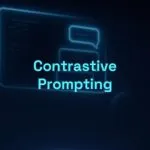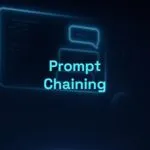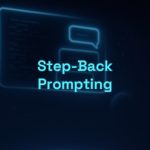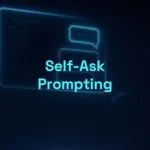COAST Framework: Context, Objective, Actions, Scenario, Task

When you need to communicate a complex situation and get a clear response, the COAST framework is one of the most comprehensive. It allows you to structure prompts that require strategic thinking, considering environment, purpose, plan, and final action.
Ideal for robust requests, COAST helps you turn challenging scenarios into clear, well-guided tasks for AI.
What is the COAST Framework?
COAST is a five-part framework that combines context and action, ensuring the AI understands the full scenario and delivers structured responses. Each component plays a key role in creating clear and effective prompts. Let’s explore the elements and see when to use them.
Structure Components
- Context: Provides the background or initial information, giving the AI the foundation to understand the situation.
- Objective: Defines what you want to achieve, such as “improve efficiency” or “engage an audience.”
- Actions: Details the steps or processes the AI should follow, like “analyze, propose, implement.”
- Scenario: Describes the specific situation or circumstances involved, adding more clarity to the context.
- Task: Specifies what the AI should do, like “create a plan” or “suggest improvements.”
These elements form a complete prompt, perfect for tasks that require organization and focus.
When to Use It?
COAST is ideal when you’re dealing with a situation that demands detailed analysis and action. Use it if:
- You need a plan or strategy that considers a specific scenario.
- You want to solve a complex problem with clear steps.
- You’re looking for a response that combines a big picture view with practical execution.
- The situation involves multiple factors or dependencies.
For example: “Given the context of [Context], the objective is [Objective]. Consider the actions: [Actions]. The scenario involves [Scenario]. The task is [Task].”
Practical Examples of COAST in Action
To illustrate how COAST works, here are three examples showing its application in real-life situations. See how it organizes ideas and delivers useful solutions.
Example 1: Engaging Employees in a Wellness Program
Context: A company wants to increase employee participation in its corporate wellness program.
Given the context of low participation in the recently launched corporate wellness program (Context), the objective is to develop a strategy to increase employee engagement (Objective). Consider the actions: identify participation barriers, propose incentives, and create effective communication channels (Actions). The scenario involves hybrid teams, with part of the staff working remotely (Scenario). The task is to create a structured plan with practical recommendations to boost program participation (Task).Why it works: The prompt covers the real scenario, goals, and steps, which guides the AI to propose a coherent plan aligned with the situation.
Example 2: Launching a Sustainable Product on the Market
Context: A cosmetics startup is about to launch a vegan and eco-friendly product line.
Given the context of growing demand for sustainable products in the cosmetics sector (Context), the objective is to launch a line of vegan products with eco-friendly appeal (Objective). Consider the actions: identify unique communication points, define distribution channels, and plan promotional actions (Actions). The scenario is marked by strong competition and a limited budget for the launch (Scenario). The task is to develop an accessible and impactful marketing strategy proposal (Task).Why it works: The AI understands the constraints and can realistically adjust its suggestions.
Example 3: Restructuring Internal Communication
Context: A company has grown rapidly and needs to improve interdepartmental communication.
Given the context of rapid company expansion and increased interdependent teams (Context), the objective is to restructure internal communication to improve flow and collaboration (Objective). Consider the actions: map current channels, propose improvements, and define best usage practices (Actions). The scenario involves teams in different time zones and the lack of a unified communication platform (Scenario). The task is to suggest an internal communication plan with recommended tools, workflows, and best practices (Task).Why it works: The prompt guides the AI to deliver solutions aligned with the company’s operational reality.
Tips to Make the Most of COAST
COAST is flexible and can be tailored to perfectly suit your goals. Here are some tips to customize it and get the best results.
Customize for Your Goal
- Context: Use real data or observations. E.g.: “15% drop in engagement”, “recent system rollout.”
- Objective: Set a clear goal. “Improve sales” is vague, but “increase sales by 10%” is specific.
- Actions: Choose steps that make sense. Three actions for something simple, more for complex cases.
- Scenario: Add useful details. “For beginners” changes the approach compared to “for experts.”
- Task: Adjust the level of detail. “Give ideas” is broad; “list 4 specific actions” is focused.
Quick Example: “Given that I’m a freelance designer (Context), my objective is to attract more clients (Objective). Research trends, suggest services, and plan a promotion (Actions) in a competitive market scenario in 2025 (Scenario) to create a list of 3 strategies (Task).”
Start Using COAST Today
COAST is your compass to transform complex challenges into clear and actionable plans with AI. It combines context, purpose, and action, ensuring your interactions with LLMs are practical and well-directed. Whether for professional projects or specific solutions, this framework is a reliable guide for consistent results.
🎯 Quick Summary: COAST defines the background (Context), the purpose (Objective), the steps (Actions), the situation (Scenario), and what to do (Task).
🔗 Want to explore more frameworks like this?
Check out the Practical Guide to Prompt Techniques, Frameworks, and Formulas for LLMs, with dozens of detailed and applicable structures for different contexts and goals, plus techniques and prompt engineering tips.
📘 Bonus tip:
Download the free eBook “Prompt Engineering Unveiled”, featuring easy explanations, practical examples, and strategies ranging from basic to advanced to master communication with AI.



